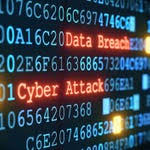Securing Wireless Data Transmission Lessons from the Military.
Securing wireless data transmission is paramount, especially for organizations handling sensitive information. No field demands greater security than military operations, where compromised data can have catastrophic consequences. Understanding the methods and technologies employed by military forces to protect their wireless communications provides invaluable insights for anyone seeking robust data security. This article delves into the key elements utilized by the military to safeguard their wireless data, offering a glimpse into the cutting-edge techniques used to maintain information superiority.
The Foundation: Encryption and Authentication
At the heart of secure wireless data transmission lie two fundamental pillars: encryption and authentication.
- Encryption: Military-grade encryption transforms sensitive information into an unreadable cipher, rendering it useless to unauthorized parties. This scrambled data can only be deciphered using a specific decryption key held by authorized recipients. The strength of the encryption algorithm, the key length, and the key management process are all crucial factors in determining the overall security. Advanced Encryption Standard (AES) and other robust algorithms are commonly employed to ensure confidentiality.
- Authentication: Before any data is transmitted or received, authentication procedures verify the identity of the users and devices seeking access. This prevents unauthorized individuals or rogue devices from infiltrating the network and intercepting sensitive information. Strong authentication mechanisms are essential for establishing trust and preventing spoofing attacks.
Secure Communication Protocols: Standardizing Security
To ensure seamless and secure communication across diverse platforms and devices, military forces rely on standardized secure communication protocols. These protocols define the rules and procedures for exchanging data, incorporating strong encryption and authentication mechanisms. Examples include:
- IPsec (Internet Protocol Security): A suite of protocols that secure IP communications by authenticating and encrypting each IP packet in a data stream.
- Secure Shell (SSH): A cryptographic network protocol that provides a secure channel over an insecure network.
These standardized protocols ensure interoperability while maintaining high levels of security, allowing different systems to communicate reliably and confidentially.
Pushing the Boundaries: Advanced Technologies for Ultimate Security
Beyond the basics, military applications leverage advanced technologies to achieve near-impenetrable data security:
- End-to-End Encryption (E2EE): This ensures that data is encrypted on the sender’s device and decrypted only on the recipient’s device, preventing any intermediate party, including service providers, from accessing the unencrypted information. E2EE offers a high level of privacy and security, as even a compromised network infrastructure cannot expose the data.
- Quantum Cryptography: This emerging field leverages the principles of quantum mechanics to create unbreakable encryption keys. The security of quantum cryptography relies on the laws of physics, making it fundamentally different from traditional encryption algorithms that can be theoretically broken with sufficient computing power. While still in its early stages, quantum cryptography promises to revolutionize data security in the future.
Defense in Depth: Layered Security Measures
Securing wireless data requires a multi-layered approach, combining various techniques to create a robust defense against potential threats.
- Air Gapping: This involves physically isolating a network from all other networks, including the internet and other private networks. By preventing any direct connection, air gapping effectively eliminates the risk of remote cyberattacks. While it can limit data accessibility, it provides an unparalleled level of security for highly sensitive information.
- Multi-Factor Authentication (MFA): MFA requires users to provide multiple verification factors, such as a password, a fingerprint scan, or a one-time code from a mobile device, before granting access. This significantly reduces the risk of unauthorized access, even if a password is compromised.
Looking Ahead: Light Fidelity (Li-Fi) as a Secure Alternative
As technology evolves, new methods for secure data transmission are emerging. One promising alternative is Light Fidelity (Li-Fi), a wireless communication technology that uses light to transmit data. Li-Fi offers several advantages over traditional Wi-Fi:
- Enhanced Security: Light cannot penetrate walls, making it naturally more secure than radio waves. Eavesdropping is much more difficult, as the signal is confined to a specific area.
- Higher Bandwidth: Li-Fi can theoretically achieve much higher data transfer rates than Wi-Fi.
While still under development, Li-Fi holds significant potential for secure data transmission in environments where confidentiality is paramount.
Conclusion:
Securing wireless data transmission in military operations demands a multi-faceted approach, combining robust encryption, authentication, secure communication protocols, and advanced technologies like E2EE and quantum cryptography. Techniques like air gapping and MFA add further layers of security. Understanding these principles and exploring emerging technologies like Li-Fi are crucial for protecting sensitive information in an increasingly interconnected and threat-filled world. By learning from the stringent security measures employed by the military, organizations can significantly enhance their own data protection strategies and safeguard their critical assets.








